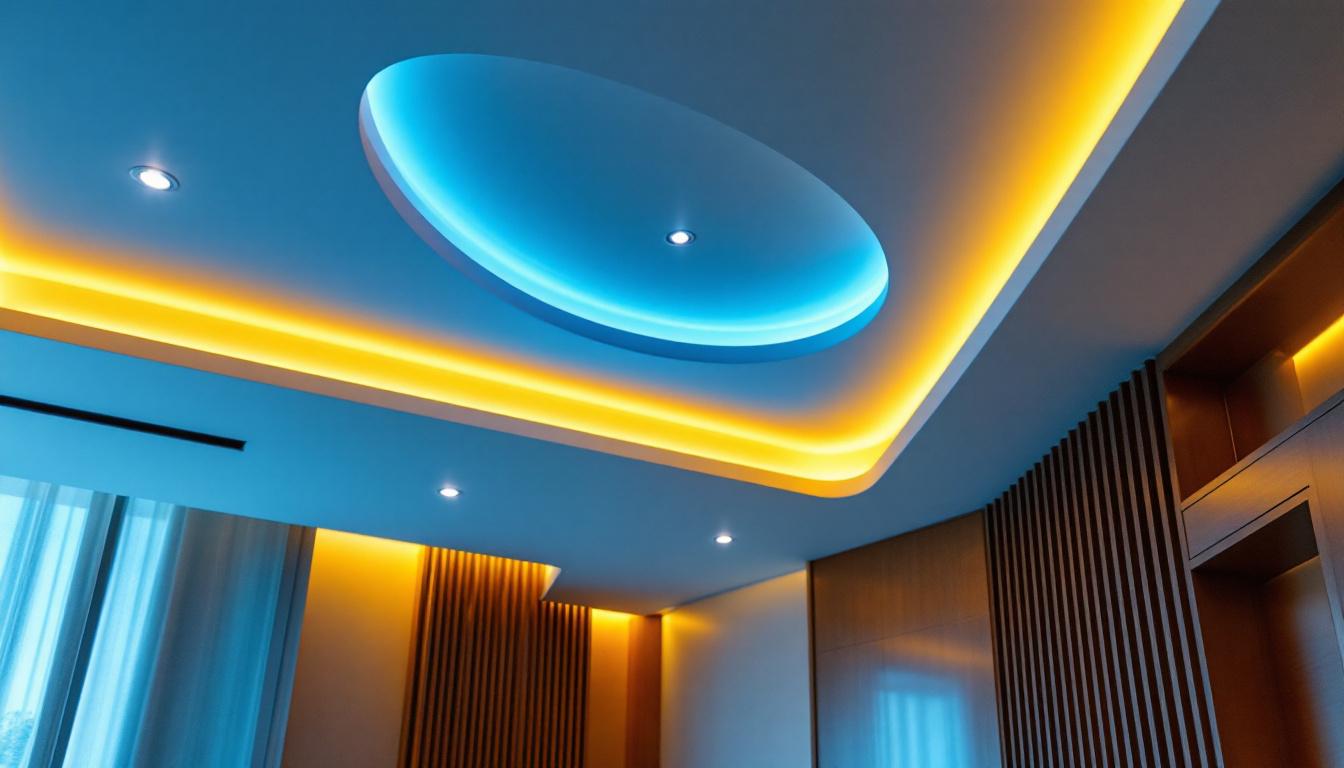
Lighting contractors play a crucial role in the successful implementation of light conversion projects. As the industry evolves and technology advances, the importance of understanding the nuances of light conversion becomes paramount. However, even seasoned professionals can fall into common traps that can lead to inefficiencies, increased costs, and unsatisfactory results. This article explores some of the most prevalent mistakes made by lighting contractors during light conversion projects and offers insights on how to avoid them.
One of the most significant oversights in light conversion projects is the failure to conduct thorough site assessments. A comprehensive evaluation of the space can reveal critical factors that impact lighting design, energy efficiency, and overall effectiveness. Without this foundational step, projects may not only fall short of their intended goals but also lead to increased operational costs and diminished user satisfaction.
Before implementing any lighting changes, it is essential to understand the existing electrical infrastructure. This includes evaluating the type of wiring, circuit load capacity, and compatibility with new lighting technologies. Skipping this step can lead to unexpected costs and delays, as contractors may need to make unplanned modifications to accommodate new systems. Additionally, understanding the age and condition of existing fixtures can inform decisions about whether to retrofit or replace them entirely, which can significantly affect budget and timeline.
Every space has unique lighting requirements based on its purpose and usage patterns. Failing to assess these needs can result in inadequate lighting solutions that do not meet the expectations of clients. Engaging with clients to understand their vision and requirements is crucial for achieving satisfactory outcomes. This process often involves conducting surveys or interviews to gather insights on how the space is used, what activities take place, and any specific aesthetic preferences. Moreover, considering factors such as natural light availability and the time of day the space is most frequently used can help in crafting a tailored lighting strategy that enhances functionality and ambiance.
In today’s environmentally conscious world, evaluating energy efficiency is paramount. A thorough site assessment should include an analysis of current energy consumption patterns, which can highlight opportunities for improvement. For instance, identifying areas where natural light can be maximized may reduce reliance on artificial lighting during daylight hours. Additionally, understanding the energy performance of existing fixtures can guide decisions about the adoption of LED technology or smart lighting systems, which not only lower energy costs but also contribute to sustainability goals. By prioritizing energy efficiency from the outset, projects can achieve long-term savings and a reduced carbon footprint.
Another critical aspect of comprehensive site assessments is considering future scalability. As businesses evolve, their lighting needs may change, necessitating a flexible approach to design. A thorough assessment can help identify potential areas for expansion or modification, ensuring that the lighting system can adapt without requiring a complete overhaul. This foresight not only saves time and resources but also allows for a more strategic investment in lighting infrastructure, aligning with the long-term vision of the organization. By planning for scalability, projects can remain relevant and effective as the demands of the space grow and shift over time.
Energy efficiency is a driving force behind many light conversion projects. However, some contractors may overlook essential energy efficiency standards, which can lead to compliance issues and increased operational costs for clients.
Regulations surrounding energy efficiency are constantly evolving. Lighting contractors must stay informed about local codes and standards to ensure compliance. This includes understanding the requirements set forth by organizations such as the Department of Energy or local utility companies. Ignoring these regulations can result in costly fines and a tarnished reputation.
Another common mistake is selecting lighting products that do not meet energy efficiency criteria. While it may be tempting to choose lower-cost options, investing in high-quality, energy-efficient products can yield long-term savings for clients. Contractors should prioritize products with certifications such as ENERGY STAR or DesignLights Consortium (DLC) to ensure optimal performance and efficiency.
Effective communication is vital in any project, but it becomes even more critical in light conversion projects where clients may have varying levels of understanding about lighting technologies and design principles.
Contractors need to ensure that clients have realistic expectations regarding project timelines, costs, and outcomes. Miscommunication can lead to frustration and dissatisfaction. By providing clear and transparent information, contractors can foster trust and collaboration, ultimately leading to a more successful project.
Involving clients in the design process can enhance satisfaction and ensure that the final product aligns with their vision. Contractors should encourage feedback and be open to suggestions, creating a collaborative environment that values the client’s input. This approach not only improves the outcome but also strengthens the client-contractor relationship.
Lighting controls play a significant role in enhancing the functionality and efficiency of lighting systems. However, many contractors neglect to incorporate these technologies into their designs, missing out on valuable benefits.
There are various types of lighting controls available, including dimmers, occupancy sensors, and smart lighting systems. Each option offers unique advantages that can improve energy efficiency and user experience. Contractors should familiarize themselves with these technologies and consider how they can be integrated into their projects.
Clients may not be aware of the advantages that lighting controls can provide. Educating them on how these systems can enhance comfort, save energy, and extend the lifespan of lighting fixtures is essential. By highlighting the benefits, contractors can encourage clients to invest in these technologies, leading to better overall project outcomes.
The quality of installation is a critical factor that can impact the performance and longevity of lighting systems. Inconsistent installation practices can lead to a range of issues, from flickering lights to premature fixture failures.
Contractors should prioritize training and certification for their installation teams. Ensuring that team members are well-versed in best practices and industry standards can significantly improve the quality of installations. Regular training sessions can keep the team updated on new technologies and installation techniques, fostering a culture of excellence.
Implementing a system for quality checks during and after installation can help identify potential issues before they become significant problems. Regular inspections and testing can ensure that lighting systems are functioning as intended, providing peace of mind for both contractors and clients.
Many contractors focus solely on the installation phase and neglect the importance of post-installation support. Providing ongoing support can enhance client satisfaction and foster long-term relationships.
Lighting systems require regular maintenance to ensure optimal performance. Contractors should consider offering maintenance services to clients, helping them keep their systems in top condition. This not only adds value to the service but also provides an opportunity for contractors to generate recurring revenue.
Clients may not fully understand how to operate and maintain their new lighting systems. Offering training sessions for end users can empower them to make the most of their investment. By equipping clients with the knowledge they need, contractors can enhance user satisfaction and reduce the likelihood of issues arising from improper use.
While functionality and efficiency are critical in light conversion projects, aesthetics should not be overlooked. The visual appeal of lighting can significantly impact the overall atmosphere of a space.
Contractors should strive to balance form and function in their designs. This involves selecting fixtures that not only perform well but also complement the overall design aesthetic of the space. Engaging with clients to understand their design preferences can lead to more harmonious and visually appealing outcomes.
Leveraging design software can help contractors visualize how different lighting solutions will look in a space. This technology allows for more informed decision-making and can help clients better understand the potential outcomes of their projects. By investing time in the design phase, contractors can create more attractive and functional lighting solutions.
The lighting industry is rapidly evolving, with new technologies emerging regularly. Contractors who fail to keep up with these advancements risk falling behind their competitors and delivering outdated solutions to clients.
To stay competitive, lighting contractors should invest in continuous education and professional development. This can include attending industry conferences, participating in webinars, and pursuing certifications in new technologies. Staying informed about the latest trends and innovations can enhance a contractor’s skill set and improve project outcomes.
Smart lighting technologies are becoming increasingly popular due to their energy-saving capabilities and ease of use. Contractors should familiarize themselves with these systems and be prepared to offer clients innovative solutions that incorporate smart technology. This not only meets client demands but also positions contractors as forward-thinking professionals in the industry.
Light conversion projects present numerous opportunities for lighting contractors to showcase their expertise and deliver exceptional results. However, avoiding common mistakes is essential to ensure success. By conducting thorough site assessments, staying updated on energy efficiency standards, maintaining effective communication with clients, and embracing new technologies, contractors can enhance their project outcomes and build lasting relationships with clients.
Ultimately, the key to success in the lighting industry lies in a commitment to quality, continuous improvement, and a deep understanding of both technical and aesthetic aspects of lighting design. By addressing these common pitfalls, lighting contractors can elevate their services and establish themselves as leaders in the field.
Ready to avoid common mistakes and lead your light conversion projects to success? Choose LumenWholesale for your lighting needs and benefit from our spec-grade lighting products at unbeatable wholesale prices. With our commitment to quality and affordability, you can access a wide range of high-performance lighting without the middleman markups. Plus, enjoy the convenience of free shipping on bulk orders. Elevate your lighting solutions and make your next project shine with Wholesale Lighting at the Best Value. Experience the LumenWholesale difference today!

Discover the ultimate guide for lighting professionals with our essential checklist for buying light bulbs.

Discover the essential insights into recessed ceiling lighting as we address lighting contractors’ most frequently asked questions.

Discover the essentials of installing bedroom pot lights with our comprehensive guide tailored for lighting contractors.

Discover essential insights into troffer lights with our comprehensive guide tailored for lighting contractors.